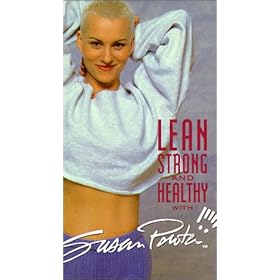Body composition is the amount of fat vs. lean muscle tissue in the human body. This is commonly expressed as a percentage of a person's total weight. Body weight alone is not a clear indicator of good health because it does not distinguish how many pounds are from fat and how many are from lean body mass. The popularity of body composition (as a measure of progress) is growing as people realize its value in determining health risks.
If you’ve read
Body Composition Measures Results, then you know how helpful it is to track your body fat, rather than relying on weight alone to measure your fat loss.
There are several methods of measuring fat in the body—some are simply estimates based on a formula, and others are more invasive. Use this reference guide to find an option that best suits you.
Height/Weight Tables What is it: In 1953 the Metropolitan Life Insurance Company developed the first height/weight tables to calculate how overweight or underweight individuals were. The data were based on "averages" from its client base for both men and women. In 1999, the tables were revised based on updated data.
How it works: The function of a height and weight table is to help determine if weight is within an appropriate range for height and frame size. Frame size is an important, subjective factor in the development of the tables; small, medium and large frame determinations change the "ideal weight" recommendation.
Accuracy: On an individual basis, height/weight tables can provide very inaccurate conclusions about an individual's health risk. But they can be a good indicator of whether or not you are within an average range. If you outside of the range, have another kind of test conducted to confirm if you are at risk for health problems related to your weight.
Limitations: Scales cannot determine the lean-to-fat ratio of a certain weight. An individual can be "over-weight" and not "over-fat." A bodybuilder, for example, may be 8% body fat, yet at 250 pounds, considered "over-weight" by a typical height-weight chart. Therefore, these charts are not a good indication of a person's ideal body weight for optimal health, much less for athletic performance . Also, much of the data collected for the Life Insurance tables came from upper and middle-class Caucasians, and therefore may not reflect an appropriate weight for other races and socioeconomic groups.
Where you can get it: http://www.bcbst.com/MPManual/HW.htmBody Mass Index What is it: Body Mass Index is a quick and easy method for providing a general guide in determining if one’s weight is appropriate for one’s height. It has recently been used to quantify an individual's obesity level.
How it works: The equation for BMI is weight (in kilograms) divided by height squared (in meters). To convert pounds to kilograms, divide by 2.2. To convert inches to meters, multiply by .0254. For example, if you weigh 170 lbs and are 5’6 (66 inches), your BMI would be (170/2.2)/(66*.0254)(66*.0254), or 27.5. The USDA healthy weight guidelines are a BMI ranging from 19-25 for women and 14-20 for men.
Accuracy: Since only an individual's height and weight are used, BMI does not provide a differentiation of fat and nonfat weight. For most adults, however, there is a clear correlation between higher BMI and negative health consequences.
Limitations: BMI is an average based on population studies. Because it does not differentiate between fat and nonfat weight, it may overestimate body fat in athletes and others who have a muscular build. In the same way, it may underestimate body fat in older persons and others who have lost muscle mass.
Girth Measurements What is it: The use of girth and length measurement is a quick, easy and inexpensive method to estimate body composition or describe body proportions. It is based on the assumption that body fat is distributed at various sites on the body, such as the waist, neck and thigh, so that is where measurements are taken. (Muscle tissue, on the other hand, is usually located in places such as the biceps, forearm and calf.) The subject’s weight, height, girth size and body part comparisons are used to calculate percent body fat.
How it works: Using a cloth tape, girth and length measurements are taken from specific points on the body. The waist-to-hip ratio is one of the most commonly used values to reflect the degree of abdominal obesity.
To calculate your waist-to-hip ratio, use a measuring tape to measure the circumference of your hips at the widest part of your buttocks. Then measure your waist at the smaller circumference of your natural waist, usually just above the belly button. To determine the ratio, divide your waist measurement by your hip measurement.
|
Male
|
Female
|
Health Risk
Based Solely on WHR
|
|
0.95 or below
|
0.80 or below
|
Low Risk
|
|
0.96 to 1.0
|
0.81 to 0.85
|
Moderate Risk
|
|
1.0+
|
0.85+
|
High Risk
| |
Most people store fat in two distinct ways- they are often called 'apple' and 'pear' shape. These terms refer to the weight around your middle ('apple') and around your hips ('pear'). If you carry more weight around the middle then this puts you under additional risk from heart disease and diabetes.
Accuracy: Using this method gives a high-level assessment of an individual, and the accuracy is typically within 5% of the value measured using underwater weighing (the “gold standard” for body composition analysis).
Limitations: The major disadvantage of this method is that the measurements provide little information about the fat and nonfat components of the body. For example, a body builder may have a thigh that has a larger circumference (yet less fat) than an obese individual.
Skin Fold Measurements What is it: Skin fold measurements require the use of a "caliper device" to measure the thickness of fat stores. The assumption is that these stores are proportional to overall body fat, and thus by measuring several sites, total body fat may be calculated. Little equipment is needed, the test can be done quickly, and the interpretation is simple. Therefore it is one of the most common ways to measure body fat.
How it works: Calipers are devices that pinch your skin, pulling fat away from muscles and bones. Typically, the tester pinches three or four different sites on your body, such as your abdomen, arm, and back. The thickness of each pinch is plugged into a formula to determine your body fat level. There are many sites on the body where skin fold measurements can be taken. Currently, over 100 different equations are available to estimate body fat with the use of skin fold calipers.
Accuracy: The American College of Sports Medicine states that skin fold measurements, when performed by a trained, skilled tester, are up to 98% accurate. Because of the consistency in results, the high success rate, and the low margin of error, this is generally accepted as the best field test, outside of clinical testing, such as hydrostatic weighing.
Limitations: The estimation results obtained from skin fold measurements vary widely from technician to technician. The "art" of skin fold measurements requires the technician to properly identify a site measurement and pinch the skin gathering only the fat store and no other tissue. If the tester does not pinch exactly the right spot, or pull all the fat away from the muscle, the test will be inaccurate. When skin fold calipers cannot open wide enough to measure the total fat thickness, this technique tends to grossly underestimate body fat percentage in the obese population.
The wide variety of equations (number and location of sites tested) reflects the problem with the accuracy of this method.
Where you can get it: Many local gyms, YMCA’s, and community centers offer this as a free service free or charge a minimal fee. This test should be done by a trained professional to ensure accurate results.
Bioelectrical Impedance
What is it: This method is based on the fact that the lean (muscle) tissue of the body is much more conductive due to its higher water content than fat tissue. The more lean tissue present in the body, the greater the conductive potential, measured in ohms.
How it works: While you’re on your back, the bioimpedence meter is attached to your body at the extremities (one electrode attached to the foot and one on the hand). A small 500-800 micro-amp (50 kilohertz) signal measures the body's ability to conduct the current. The current flows through the body, finding varying resistance depending on the density of the muscle, the amount of body fat encountered, and the hydration of the tissue. The slower the signal, the more fat is present, because fat interferes with the signal.
This technique is commonly used with a hand held device (found at many local gyms) or a digital scale (found at most retail stores). The limitation with these instruments is that the hand held device only measures upper body fat, and the scale only measures lower body fat.
Accuracy: Bioelectrical impedance can have a large margin of error, especially if the subject is extremely obese or extremely lean. In one study, female distance runners averaged 20 percent body fat using this method, but more reliable methods showed that they were actually closer to 10 percent. Dehydration can also skew the results; the signal slows down, and the subject appears to have more fat than they actually do. Compared to other testing methods (girth, skin-caliper) this is the less accurate.
Limitations: If protocol is not followed (no eating or drinking 4 hours prior to the test, no exercising 12 hours before the test, etc.), the test will be inaccurate. Inconsistency in hydration, body fluids and intestinal content can result in high degree of variation from day to day. This makes this method less suitable for repeated testing when measuring small changes in body fat level. The test also tends to overestimate percent body fat in very lean individuals and underestimate body fat in obese people.
Where you can get it: Bioelectrical impedance testing can be found at local gyms, YMCAs, community centers and universities. Prices range from free to $30 per test. Home machines can be purchased for anywhere from $100-$400.
Hydrostatic (underwater) Weighing What is it: Hydrostatic measurements are based on the assumption that density and specific gravity of lean tissue is greater than that of fat tissue. In other words, lean tissue will sink in water and fat tissue will float. By comparing a test subject's mass measured under water and out of the water, body composition may be calculated. A person with more bone and muscle will weigh more in water than a person with less bone and muscle, meaning they have a higher bone density and lower percentage of body fat.
How it works: A large tank of water, usually 1000 gallons, must be maintained at a constant temperature. Equipment to measure residual lung volume, and a scale connected to an "under-water chair" are also required. Test subjects are asked to exhale as much air as possible and be immersed for 10 to 15 seconds for an underwater weight measurement to be taken. This procedure is repeated 7 to 10 times. Total test procedures may require 45 minutes to one hour.
Accuracy: Hydrostatic weighing is currently considered the "Gold Standard" of body composition analysis. It is the most accurate way to measure body fat.
Limitations: The equipment required to perform hydrostatic measurements is bulky and maintenance intense. The procedure is also time-consuming and complicated, especially if the subject is unable to expel all of the air from their lungs. Fear of immersion in a tank of water, fear of infection and obesity are additional barriers to this technique.
Where you can get it: This test is usually only available at research institutions and universities. Typical cost is $10-$75 due to the involved nature of the test.
Considerations Related to Body Composition
Although two people can have the same body fat percentage, that doesn't mean they face the same health risks. Where body fat is located can place a person at far greater risk for fat-related health conditions such as: cardiovascular disease, high blood pressure, stroke, diabetes and even certain types of cancers.
Fat around the abdomen may present the greatest risk for health problems. Abdominal fat is most common in males and is associated with increased risks for heart disease, stroke, diabetes and high blood pressure. In contrast, fat around the hips and thighs is most common in females and seems relatively harmless with respect to these health problems.
It is important for good health and well-being to not only know your body fat percentage, but to pay attention to where that fat is located.
So which test is the best one for you? If you are looking for an average estimate of your body fat percentage and how you compare with the population, BMI and girth measurements are easy to do at home. For more accuracy and personalized results, the skin fold test is best. It’s usually easy to find somewhere that does skin fold testing for a minimal cost. Bioelectrical impedance and hydrostatic weighing are more complicated tests that are more costly and harder to find.
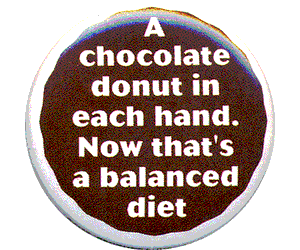 So I have been taking a different approach the last week or so on this dieting journey. I got tired of counting calories ... points ... carns ... weighing in all the time, exercising more than any normal person should have to do to lose weight & guess what it got me? 2 oz gone for the second week in a row. Hmmm, could be something to this less streeful way of living. I have eaten anything I wanted ... cookies, ice cream, high carbs ... you name it I have eaten it, but I have controlled my portions. I basically only worked out on Monday morning at Curves but I have been sick since Monday. I tried exercising Tuesday but after 10 minutes I gave up & laid back down ... nothing Wed or Thur. & the way I'm feeling right now I won't be doing anything today either.
So I have been taking a different approach the last week or so on this dieting journey. I got tired of counting calories ... points ... carns ... weighing in all the time, exercising more than any normal person should have to do to lose weight & guess what it got me? 2 oz gone for the second week in a row. Hmmm, could be something to this less streeful way of living. I have eaten anything I wanted ... cookies, ice cream, high carbs ... you name it I have eaten it, but I have controlled my portions. I basically only worked out on Monday morning at Curves but I have been sick since Monday. I tried exercising Tuesday but after 10 minutes I gave up & laid back down ... nothing Wed or Thur. & the way I'm feeling right now I won't be doing anything today either.  I wonder what my dietician will say when she see's I'm not only losing weight but doing the complete opposite that she said. She told me 45-90 minutes of cardio/weights 6 times a week & 3 fruits, 6 veggies a day. I also had to get my fiber to at least 35 but she really wanted it at 45g per day. Well lets see ... the only fruit I had yesterday was a banana & the only veggie came from veggie soup last night. Exercise was only 40 minutes all week long & I lost ... kinda want to call her & say HA ... you're wrong! You don't know what your talking about.
I wonder what my dietician will say when she see's I'm not only losing weight but doing the complete opposite that she said. She told me 45-90 minutes of cardio/weights 6 times a week & 3 fruits, 6 veggies a day. I also had to get my fiber to at least 35 but she really wanted it at 45g per day. Well lets see ... the only fruit I had yesterday was a banana & the only veggie came from veggie soup last night. Exercise was only 40 minutes all week long & I lost ... kinda want to call her & say HA ... you're wrong! You don't know what your talking about. Tomorrow ... hoping I feel better. DD was asked by her riding instructor to go watch a dressage show. It's the type of thing she is learning about. Never been to one before so I don't know what to expect. I'm hoping it's interesting cause if I'm gonna sit there sick I want to be entertained. Know what I mean. DD is still begging us for a horse on a daily basis but I just don't see it happening. Dad is trying to get some land so he can get her one but I still don't see that happening. I love him for trying but I almost want to tell him no. The only reason I don't is because grandparents are supposed to spoil their grand babies so who am I to tell him he can't. He moved here to be near them ...
Tomorrow ... hoping I feel better. DD was asked by her riding instructor to go watch a dressage show. It's the type of thing she is learning about. Never been to one before so I don't know what to expect. I'm hoping it's interesting cause if I'm gonna sit there sick I want to be entertained. Know what I mean. DD is still begging us for a horse on a daily basis but I just don't see it happening. Dad is trying to get some land so he can get her one but I still don't see that happening. I love him for trying but I almost want to tell him no. The only reason I don't is because grandparents are supposed to spoil their grand babies so who am I to tell him he can't. He moved here to be near them ...  Ok ... so I'm outta here for now. My head is killing me, the meds aren't working ... hubby says to take his meds so I may just have to do that. I just want all this pressure to go away. Sinus infections suck! Have a great weekend ... I'll try & post pics Monday. Not a computer chick on the weekends anymore.
Ok ... so I'm outta here for now. My head is killing me, the meds aren't working ... hubby says to take his meds so I may just have to do that. I just want all this pressure to go away. Sinus infections suck! Have a great weekend ... I'll try & post pics Monday. Not a computer chick on the weekends anymore. 2 cups cut-up summer fruit (strawberries, peaches, watermelon, etc.)
2 cups cut-up summer fruit (strawberries, peaches, watermelon, etc.)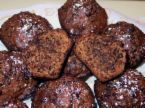




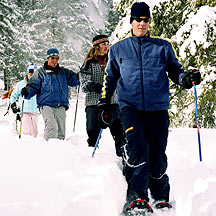

 Please don't deprive your body of anything ... listen to it. Your body is an amazing piece of work, if you listen to it carefully it will tell you when your truly hungry & also let you know when it's had enough to nourish it. If you want fast food because you crave it or because your out & it's quicker I say have it just watch your portions. Skip the mayo/katsup ... mustard is so low in everything that it's basically a freebie. If you can't do a water order a diet soda or even a tea (no sugar) add sweetner for a zero calories drink. Actually it's about 10 calories but I call it a freebie to cause 10 min. of standing will burn it off.
Please don't deprive your body of anything ... listen to it. Your body is an amazing piece of work, if you listen to it carefully it will tell you when your truly hungry & also let you know when it's had enough to nourish it. If you want fast food because you crave it or because your out & it's quicker I say have it just watch your portions. Skip the mayo/katsup ... mustard is so low in everything that it's basically a freebie. If you can't do a water order a diet soda or even a tea (no sugar) add sweetner for a zero calories drink. Actually it's about 10 calories but I call it a freebie to cause 10 min. of standing will burn it off. Stay active ... now I don't mean train for a marathon or become a gym rat, cleaning your house non stop for 30 minutes is staying active ... park in the back of the parking lot & walk in. Use the mall as a walking track that's sheltered from the weather, take the stairs whenever possible. While brushing your teeth do leg lifts ... carring bags of groceries in; do bicep curls. Use anything & everything as a way to stregthen your body. You can do it & each & every one of us is so worth it.
Stay active ... now I don't mean train for a marathon or become a gym rat, cleaning your house non stop for 30 minutes is staying active ... park in the back of the parking lot & walk in. Use the mall as a walking track that's sheltered from the weather, take the stairs whenever possible. While brushing your teeth do leg lifts ... carring bags of groceries in; do bicep curls. Use anything & everything as a way to stregthen your body. You can do it & each & every one of us is so worth it.







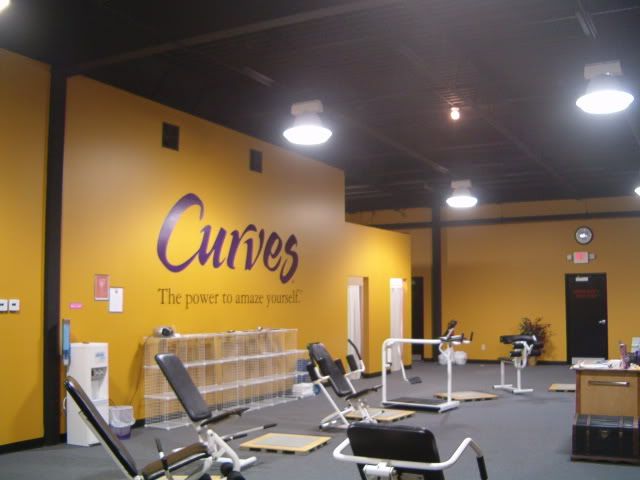
 This workout tape is a wonderful way to burn calories, tone and stretch out each morning. I love the beach and the background on this workout tape is beautiful, it's in Hawaii (oahu) The video is broken into 3 segments; 15 min aerobics which I felt was challenging enough to keep me interested (high impact option was shown as well), 15 min toning section ... I was thankful there weren't lunges cause my poor old knees can't take much more of those, then a 15 min stretch segment. I'm not big on lots of stretching afterward. I like my 5-7 moves that I hold for 10-15 sec but if ya like to stretch then this section is nice & calm.
This workout tape is a wonderful way to burn calories, tone and stretch out each morning. I love the beach and the background on this workout tape is beautiful, it's in Hawaii (oahu) The video is broken into 3 segments; 15 min aerobics which I felt was challenging enough to keep me interested (high impact option was shown as well), 15 min toning section ... I was thankful there weren't lunges cause my poor old knees can't take much more of those, then a 15 min stretch segment. I'm not big on lots of stretching afterward. I like my 5-7 moves that I hold for 10-15 sec but if ya like to stretch then this section is nice & calm.
